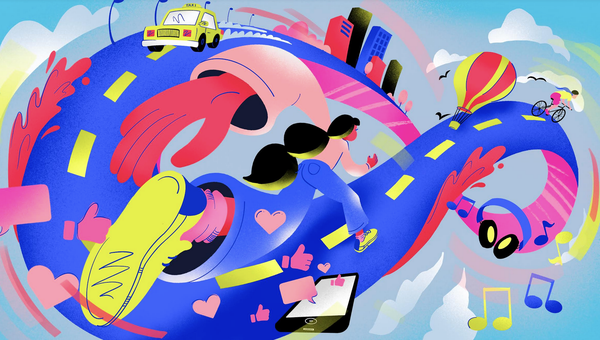
Illustration by Ally
Thomasson, Designer @ Vault49 New York
Cultural relevance is everywhere right now. But is the reason we’re obsessing over culture because we’re worried about our own relevance?
With culture moving so fast, do we fear getting left behind? Or, even worse, that we've become irrelevant?
This is the emotional squishy center at the heart of the next cultural shift: eternal
relevance.
With the world at our fingertips -- where new ideas are rare as we remix the old to find the new -- we swim in an endless sea of trends and fads, watching TikTok at 2x speed in the
hopes of absorbing more. Yet, we end up feeling exhausted and not as cool as the last thing we scrolled past.
Ultimately, we wish we could be eternally relevant -- people and brands
alike.
advertisement
advertisement
What’s driving this cultural shift?
Trendification. The relentless cycle of new cores and eras has birthed a new generation of trend forecasters
fighting over the new and the next. While this might seem like a young person’s game, we’re all sold trends in our echo chambers.
Stolen youth. In what should have been
their pivotal years, Gen Z mostly graduated online, only to be thrust into the “real world” without essential life experiences and skills. As a result, many cling onto their youth as they
navigate #adulting.
Anti-aging for all. Aging used to be women’s mortal enemy. Now, older women are less fixated on anti-aging, while younger generations are diving in. With 7.4
billion #antiaging views on TikTok alone, products like Frownies and baby Botox are gaining momentum. Not to be left behind, the global men’s skincare market is set to hit $28 billion by
2029. Everyone is seeking ways to be relevant through evolving grooming rituals.
Millennial core.Once the epitome of relevance, Millennials have been officially dethroned by
younger generations. Their once-cool cultural references now feel passé, illustrating the never-ending evolution of culture.
Kidulthood. While 50-somethings wear sneakers
to meetings, 20-somethings are embracing grey hair. Today, the concept of age is more fluid, seen as more a mindset than a number. This timeless approach challenges antiquated age-based rules and
expectations.
Two Eternally Relevant Brands:
LEGO: Capturing the creative kid in us all.
LEGO has successfully refocused, appealing to adults and doubling its
revenue to almost $10 billion in 2023, according to Business Insider. By capitalizing on sub-cultures and fan groups, LEGO creates highly sought-after sets, fostering a community of enthusiasts. This
approach positions LEGO to offer a creative escape for anyone.
Liquid Death: Embracing irony.
Liquid Death isn’t just water; it’s rebellion. Through its distinctive
style and cult appeal, Liquid Death has transcended product to become an identity. Punk + water? Why not?! Ingraining the brand with an edgy persona, helps it avoid functional category tropes and
changes the water game.
5 Ways Brands Can Leverage Eternal Relevance
- See brands as people.
Humanizing brands build meaning through evolving
expressions and behaviors. - Stay true to your brand self.
Build distinction by crafting a persona that evolves with culture, but stays true to itself. - Authentically lead in culture, never follow.
Imitating competitors weakens cultural viability. - Age isn’t everything.
Innovate towards lifestyle
rather than life stage. - Foster loyalty through engagement.
This connects people to each other, and to your brand.
Eternal relevance is
about embedding your brand into the fabric of diverse consumer identities and addressing our collective fear of irrelevance. As brands seek to show up in culture, tapping into timeless relevance
isn’t just crucial, it’s essential.
This post was previously published in an earlier edition of Marketing Insider.